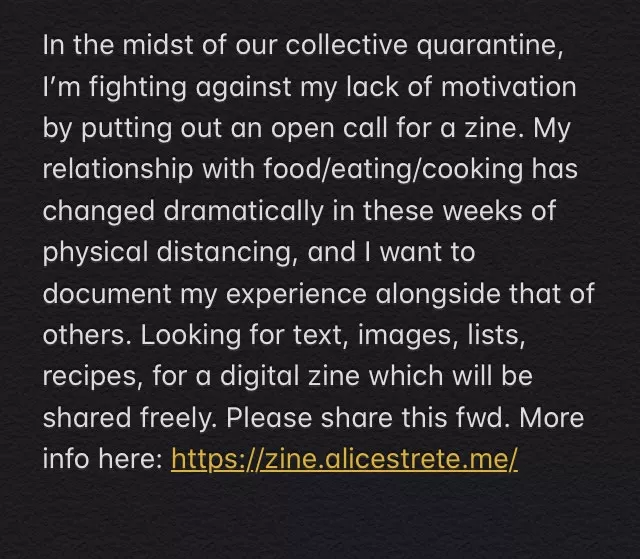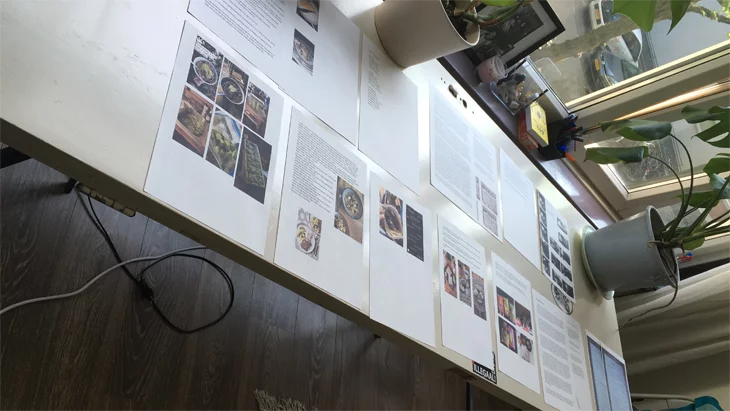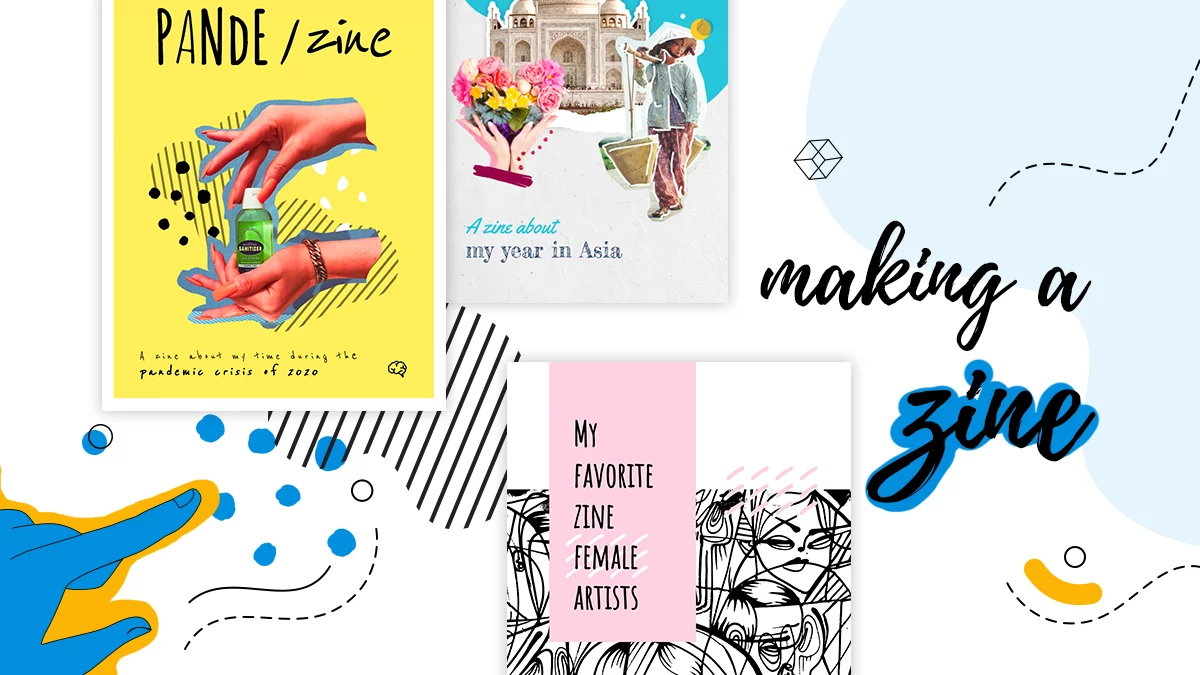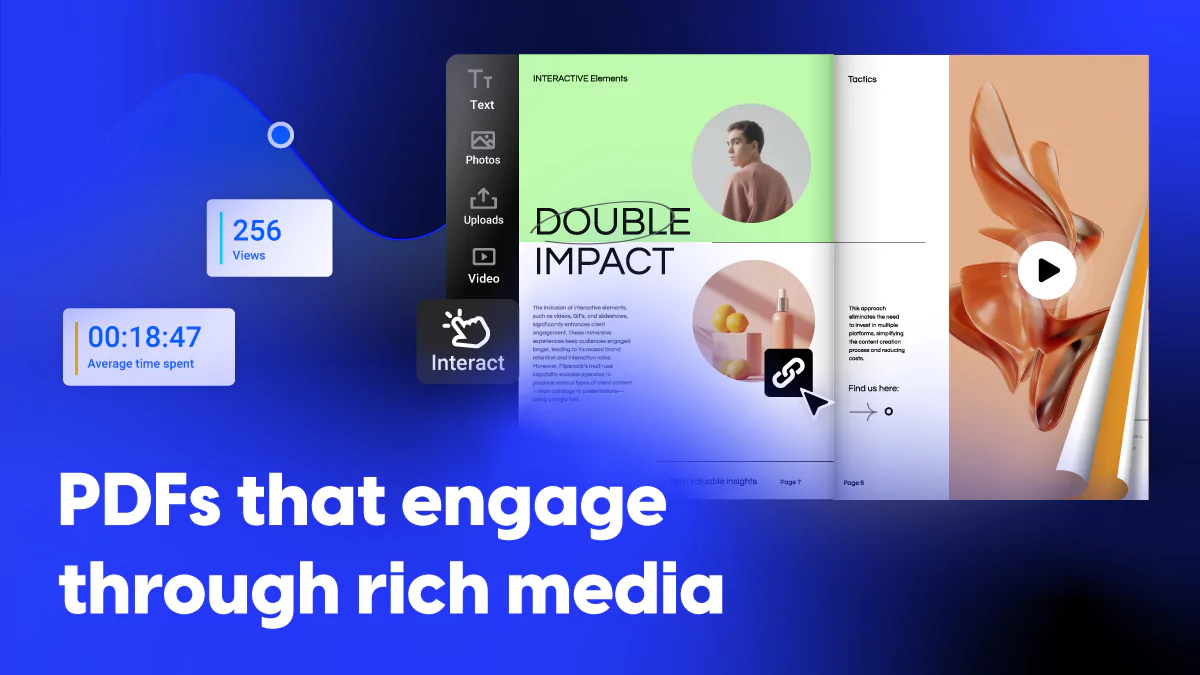The process of making a zine from scratch
Did I ever think that it took a global pandemic to actually get me to start a project I’ve wanted to do since forever? Absolutely not. But that’s what happened, and now I’m here to share my experience on making a zine from scratch.
Reading, writing, discussing, and watching shows about food has been one of my main interests ever since I can remember. What I eat and how I think about food is something I’ve always wanted to document. Especially in order to relate to other people and how they eat.
This extended lockdown period has given me yet another opportunity to talk to friends, family, and also strangers about how our relationship to food has changed. But this time I wanted to take it a step further and make a zine.
Making a zine from scratch: open call for submissions
On the first day of April, I gave myself a task. I vowed that, by the end of the day, I will have posted an open call for a zine about food during quarantine. I quickly put together a simple HTML page connected to my personal website in which I described what I was interested in documenting with this zine.
After carefully writing a text in the notes on my phone, I decided to share the open call on the social media I mostly post on – Instagram and Mastodon, as well as on a mailing list on which are gathered current and former students of the masters program I just graduated. I chose to include the latter because my course was very related to self-publishing with free software tools, which is precisely what I was intending to do. Also, many of my friends lurk on that mailing list anyway.

The submission period lasted about a month. I Initially set it for two weeks, but I ended up extending it for another two, because I wanted to get a few more submissions for my zine.
In the end, I received 12 submissions from 5 countries. I’m talking about the current locations of the people who submitted, because their homes are spread even further apart around the globe. On top of these 12, I added my own contribution – so now we have 13.
Lay your zine content carefully. See the bigger picture
After I closed the submissions, the first step of actually making a zine was to print everything I received and lay it out on a table. In this way, I was able to get an overview on the type of content I had and the amount of text and images. Just as important, I was able to start organizing the content in spreads, seeing what could go together, and I could estimate how many spreads I would need for the entire publication. Of course, this can change throughout the zine editing process, but it’s good to have an estimate from the beginning so you can begin setting up your publication into a publishing software.

When it comes to such publications, I think it is important to have a varied content. But, of course, that depends on the submissions you receive. I was both delighted and surprised with the array of the contributions I got from people. They range from screenshots of Instagram stories to poems, handwritten recipes, illustrations and even essays. When making my zine, I noticed that they occupy from half a spread to three whole spreads, which gives a nice variation both in terms of content and image to text ratio.
Choose the right tools to make your zine
Choosing the software you want to use is a crucial part of making your own zine. It can save you a lot of time and frustration if you choose a software you are already comfortable with. It can also be exciting to try one you haven’t used before.
Previously, I have worked in Adobe InDesign and I’ve also created publications using HTML for the text, CSS for styling and Weasyprint to turn everything into a PDF. This time, I wanted to test my patience at using Scribus, a FLOSS tool I’ve had trouble with before. However, I’ve found the documentation easy to follow. And, after some trouble finding the right tools inside the software, I made it work for my project. Of course, when it comes to zines, you can also go the analog way: pen, paper and scissors, and top it off with a copy machine. But I was looking for a different aesthetic with my zine.
Next, there’s a couple of things I needed to decide upon. What format would I like my zine to have? What typefaces would work best? Or, what elements should be included in the publication? Do I want my publication to exist only in digital form, or should it also be printed? I opted for a 16X22.5 cm for the page size, taking example from a couple of publications I enjoy.
For typefaces, I went for a combination of free ones I like. So I used Bitter for the title, Gudea for the main text and Viga for titles. I also chose to include an introduction, a table of contents and a colophon alongside my main content.
Regarding the last aspect, I’m planning to eventually print out my zine as well, possibly in booklet format. This means I need to pay close attention to the number of pages in my publication. Usually, the number of pages for a booklet needs to be a multiple of 4.
Play around with design
Once you have all your content laid out in a publishing software, you can start playing around with the design. This part is what I struggle with the most, because I’ve always found designing publications difficult. It’s sometimes an option to outsource the design to a professional; or someone who has a good eye for it, or simply ask the advice of friends. I opted for the latter, and it has helped me try out different versions – but I’m still working on it. One thing that helped was printing out a first draft of the zine. It always looks different and more real when you have a physical copy of your publication, and it really helps to get a sense of what needs more work.
Moving on, there are a couple more things to think about. Choosing a name for your publication is extremely hard; but also extremely important. So it took me a long time to decide upon mine. I chose to name it ‘Magiun’, the name of one of my favourite homemade Romanian jams. I wanted a name that wasn’t too specific to the content of this particular publication. I’m planning to continue in the future with other editions. Another thing that was just as important was the cover design, which I decided to paint myself in watercolors.

Zine distribution
Once I’m happy with everything, I will start considering distribution – first digitally, and eventually in physical format. I haven’t really planned out the steps I will take. But I am planning, as a first step, to build a dedicated website for my publication. Of course, publishing your zine online, on platforms such as Flipsnack is also a great option when it comes to visibility and accessibility. It’s super easy to share your zine on social media from the platform.
As you can probably tell from this text, I ended up doing every aspect of the publication myself; from editing to designing and production. This has proven to be a very suitable way of working for me. Especially during a time when I was forced to spend a lot of time at home with my thoughts. Working alone on such a project is scary and tiring, but also extremely exciting. So I’m very happy I finally got the opportunity to start making my own zine.
Author BIO: Alice Strete (1991, RO) is an artist and researcher interested in the intricate relationship between humans and the technologies they surround themselves with. Her work involves collaborative media art and publishing practices, and explores topics from women in technology to the socio-politics of food.



